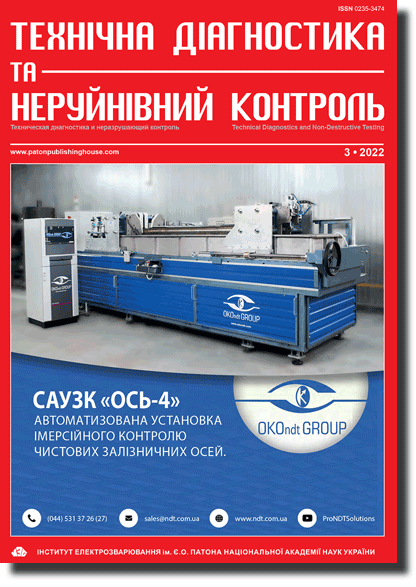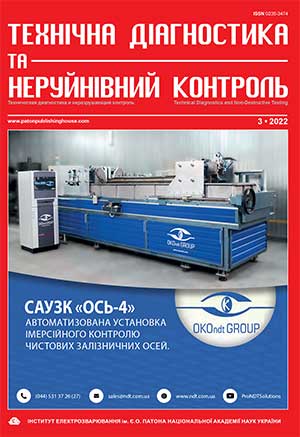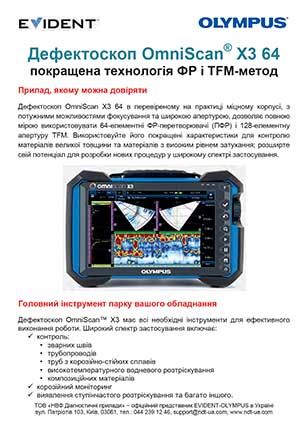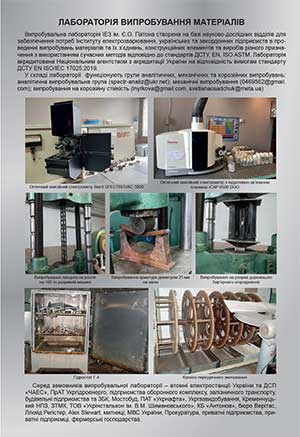| 2022 №03 (03) |
DOI of Article 10.37434/tdnk2022.03.04 |
2022 №03 (05) |
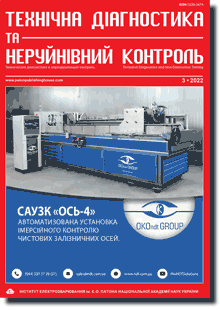
"Tekhnichna Diahnostyka ta Neruinivnyi Kontrol" (Technical Diagnostics and Non-Destructive Testing) #3, 2022, pp. 22-29
Self-generator eddy current flaw detectors for operational control of aircraft structures
V.M. Uchanin1, S.A. Bychkov2, O.I. Semenets2, V.Ya. Derecha2, S.A. Aleksandrov3
1G.V. Karpenko Physico-Mechanical Institute of NASU. 5 Naukova str., 79060, Lviv, Ukraine. E-mail: vuchanin@gmail.com
2SC «Antonov». 1 Acad. Tupolev str., 03062, Kyiv, Ukraine. E-mail: derecha@antonov.com
3SC «Ivchenko-Progress». 2 Ivanova str., 69068, Zaporizhzhia, Ukraine
Initiation and propagation of defects of fatigue and corrosion origin is one of the causes for violation of airworthiness and emergency damage of aircraft in service. Periodical nondestructive testing of critical components at all the stages of aircraft life cycle is an extremely important factor to ensure their safe service. The eddy current technique has a number of advantages, compared to other methods of aircraft structure testing, owing to high sensitivity to defects of different origin, productivity and ability to detect defects without direct contact with the surface of the tested object (TO) or even through different coatings without removing them. The method is used to detect service defects in aircraft structure elements, in particular such as fuselage, wings, wheel discs, blades and turbines of aircraft engines, brackets, etc. Eddy current flaw detection using high operational frequencies is applied for contactless detection of shallow surface cracks, in particular those, arising as a result of fatigue. The method has no alternative, when it is necessary to detect cracks in difficult-of-access places, in particular on side walls of rivet holes. The paper presents local self-generator eddy current flaw detectors of LEOTEST family with double-circuit oscillatory system, operating in the mode of intermittent generation. The flaw detectors have passed state trials and have been included into the maintenance regulations for aircraft of SC «Antonov» and aircraft engines of SP «Ivchenko-Progress» and PJSC «Motor-Sich». The paper gives general procedural recommendations and examples of application of flaw detectors for in-service testing of aircraft components and aircraft engine parts. Proposals were submitted as to further improvement of self-generator flaw detectors in order to lower the influence of subjective factors related to the qualifications of flaw detector operator on the reliability of control. Ref. 15, Fig. 11.
Keywords: eddy current flaw detector, self-generator, aircraft structure, engine, sensitivity, conrol reliability, aluminium alloy, titanium alloy
Received: 06.06.2022
References
1. https://www.bbc.com/russian/international/2011/04/110404_us_plane_fatigue2. Campbell, G.S., Lahey, R. (1984) A survey of serious aircraft accidents involving fatigue fracture. Intern. Journal of Fatigue, 6(1), 25-30. https://doi.org/10.1016/0142-1123(84)90005-7
3. https://ru.wikipedia.org/wiki/Aviakatastrofy v SSSR.
4. Hagemaier, D.J. (1991) Nondestructive testing developments in the aircraft industry. Materials Evaluation, 49(12), 1470-1478.
5. Hagemaier, D.J. (1991) Application of crack detection to aircraft structures. In «Fatigue crack measurement: techniques and applications» (Eds K.J. Marsh, R.A. Smith and R.O. Ritchie). Warley (UK), EMAS, 419-455.
6. Ball, D.L. (2003) The Role of Nondestructive Testing in Aircraft Damage Tolerance. Materials Evaluation, 61(7), 814-818.
7. Riegert, G., Pfleiderer, K., Gerhard, H., Solodov, I., Busse, G. (2006) Modern Methods of NDT for Inspection of Aerospace Structures. 9th Europ. Conf. on Non-destructive Testing, Berlin. https://www.ndt.net
8. Fedosenko, Yu.K., Gerasimov, V.G., Pokrovsky, A.D., Ostanin, Yu.Ya. (2003) Non-destructive testing: Refer. book. Ed. by V.V. Klyuev. Vol.2, Book 2. Eddy-current control, 340- 687 [in Russian].
9. Dorofeev, A.L., Kazamanov, Yu.G. (1980) Electromagnetic flaw detection. Moscow, Mashinostroenie [in Russian].
10. García-Martín, J., Gómez-Gil, J., Vázquez-Sánchez, E. (2011) Non-destructive techniques based on eddy current testing. Sensors, 11, 2525-2565. https://doi.org/10.3390/s110302525
11. Glazkov, Yu.A., Beda, P.I. (1997) Objectives of operational flaw detection, solved at the stage of design and fabrication of objects. Defektoskopiya, 4, 3-11 [in Russian].
12. Beda, P.I., Sapunov, V.M. (2000) Experience of eddy current control of clamping holes in aviation engineering. Ibid., 4, 3-9 [in Russian].
13. Uchanin, V. (2021) Enhanced eddy current techniques for detection of surface-breaking cracks in aircraft structures. Transactions on Aerospace recearch, 1(262), 1-14. https://doi.org/10.2478/tar-2021-0001
14. Uchanin, V.M. (2022) Optimization of the design of eddy current probe of parametric type to detect surface cracks. The Paton Welding J., 3, 54-64. https://doi.org/10.37434/tpwj2022.03.08
15. Uchanin, V.M. (2022) Analysis of operation of a dual-circuit autogenerator eddy current flaw detector in intermittent generation mode. Tekh. Diahnost. ta Neruiniv. Kontrol, 2, 24-34. [in Ukrainian] https://doi.org/10.37434/tdnk2022.02.04
Advertising in this issue:
The cost of subscription/purchase order journals or individual articles
| Journal/Currency | Annual Set | 1 issue printed |
1 issue |
one article |
| TPWJ/USD | 384 $ | 32 $ | 26 $ | 13 $ |
| TPWJ/EUR | 348 € | 29 € | 24 € | 12 € |
| TPWJ/UAH | 7200 UAH | 600 UAH | 600 UAH | 280 UAH |
| AS/UAH | 1800 UAH | 300 UAH | 300 UAH | 150 UAH |
| AS/USD | 192 $ | 32 $ | 26 $ | 13 $ |
| AS/EUR | 180 € | 30 € | 25 € | 12 € |
| SEM/UAH | 1200 UAH | 300 UAH | 300 UAH | 150 UAH |
| SEM/USD | 128 $ | 32 $ | 26 $ | 13 $ |
| SEM/EUR | 120 € | 30 € | 25 € | 12 € |
| TDNK/UAH | 1200 UAH | 300 UAH | 300 UAH | 150 UAH |
| TDNK/USD | 128 $ | 32 $ | 26 $ | 13 $ |
| TDNK/EUR | 120 € | 30 € | 25 € | 15 € |
AS = «Automatic Welding» - 6 issues per year;
TPWJ = «PATON WELDING JOURNAL» - 12 issues per year;
SEM = «Electrometallurgy Today» - 4 issues per year;
TDNK = «Technical Diagnostics and Non-Destructive Testing» - 4 issues per year.





